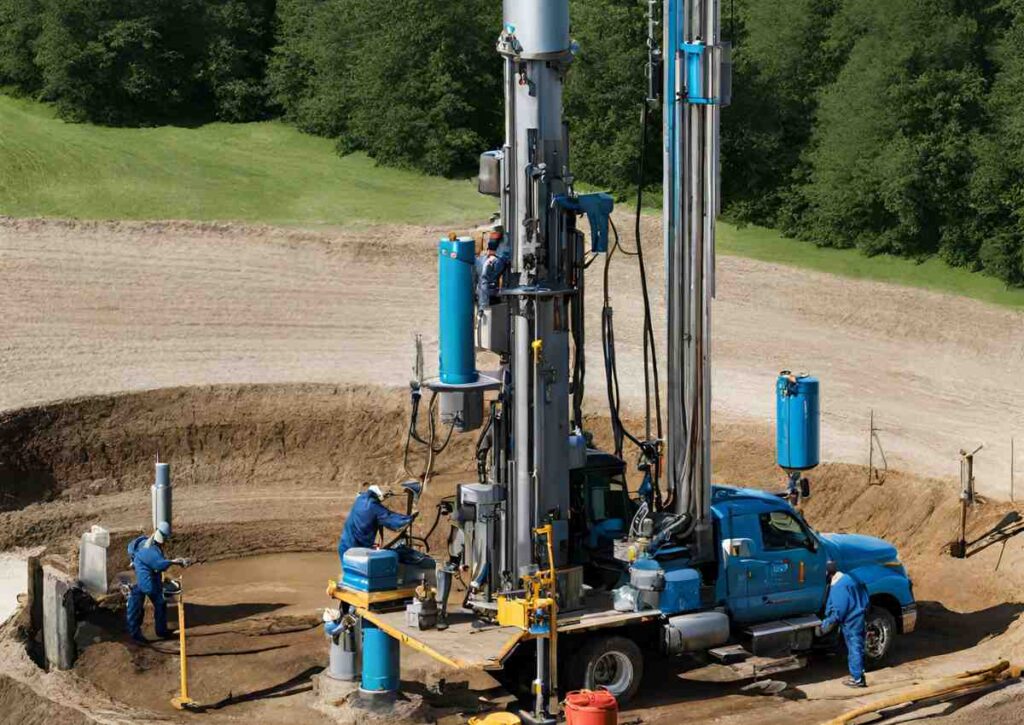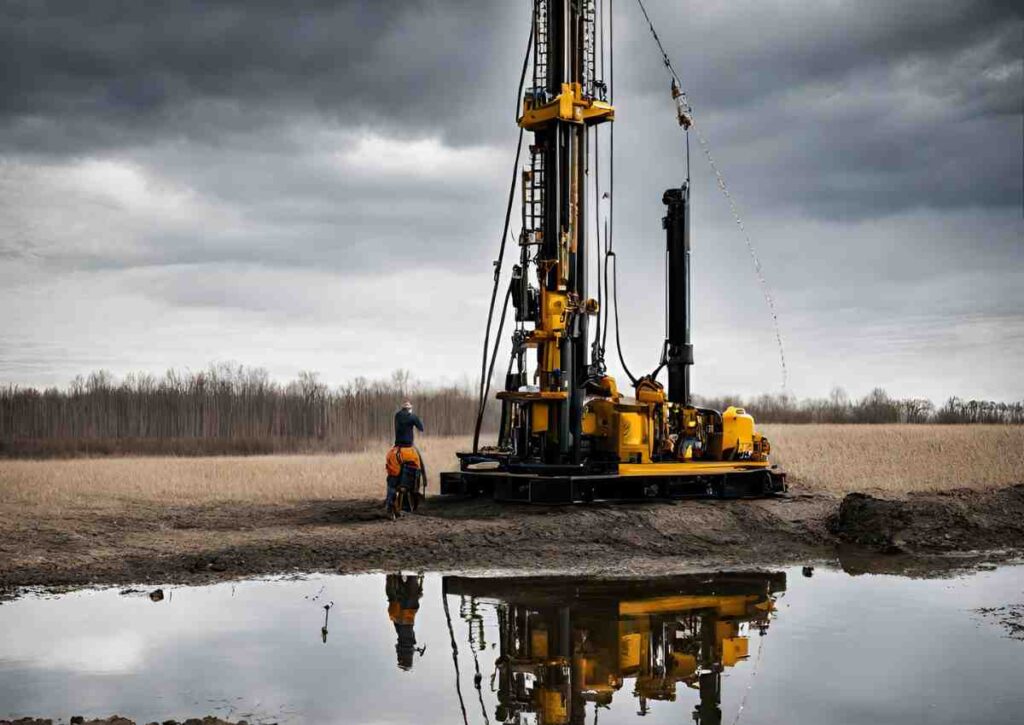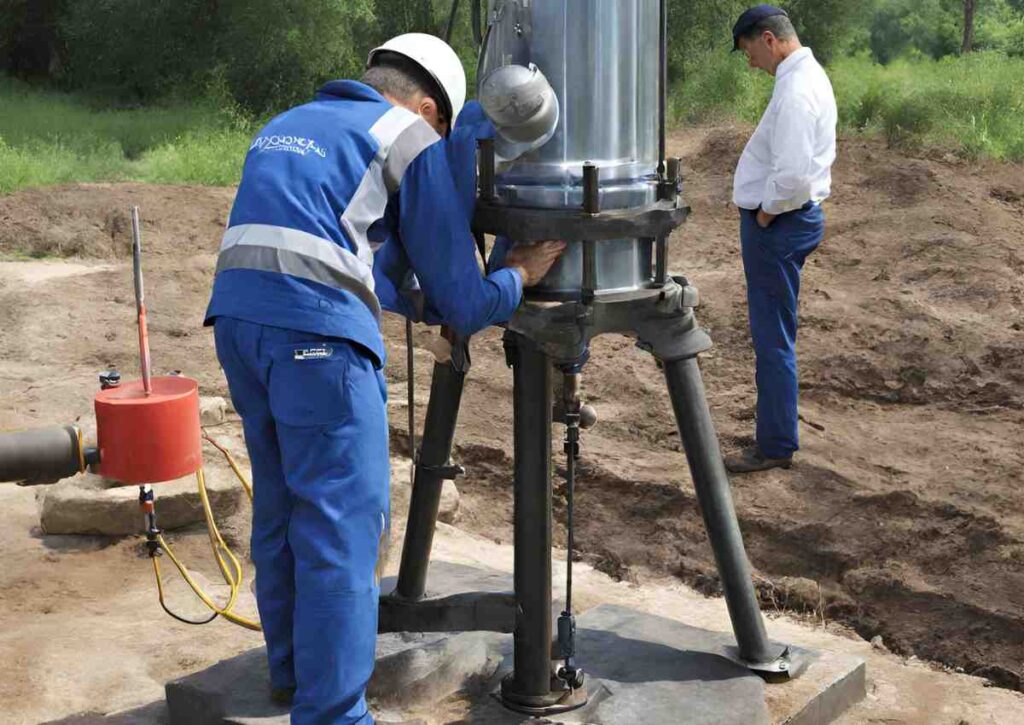As the world’s population grows, so does the need for fresh water. This has made reliable water supply methods, especially wells, even more important.
Wells are getting a lot of attention because they provide water for many uses, from drinking to farming.
Yes, an existing well be drilled deeper. This process, known as ‘well deepening,’ involves drilling deeper into the Earth to access additional water supply or geological formations.
In this blog, I’ll take you on a trip through the depths of well drilling, regulatory issues, and the effects on the environment.
Our goal is to satisfy our thirst and our interest in what might be possible by drilling deeper into the Earth’s core.
Can You Deepen An Existing Well?
Deepening an existing well is possible. This method is called “well-deepening.” It includes drilling deeper into the Earth to get to more geological formations or water sources.
To make sure the process is safe and possible, things like honesty and following the rules must be carefully looked at.
Understanding The Basics Of Well Drilling

Wells are essential for accessing groundwater, a crucial source of drinking water, agricultural irrigation, industrial processes, and more.
The drilling process involves drilling rigs equipped with drill bits to penetrate the Earth’s surface.
The choice of drilling method (e.g., rotary, percussion) depends on the geological conditions of the site.
Locating Possible Aquifers
Before drilling a well, hydrogeological surveys are conducted to identify potential aquifers beneath the ground.
These surveys analyse the area’s geology, soil composition, and groundwater flow patterns.
The data collected helps determine the optimal well location to access an abundant and sustainable water source.
Determining Well Depth
The depth of a well is carefully calculated by looking at how much water the town or user needs, how much water is expected to come out of the aquifer, and what kinds of rocks are present.
For home use, a shallower depth may be enough, but for industry or agricultural use, deeper wells may be needed to make sure there is enough water.
Assessing the Feasibility Of Deepening
Before thinking about deepening an old well, it needs to be carefully looked at. One part of this is checking the well’s structure to make sure it can handle the deeper digging process.
The geology of the spot should be looked at again to see if it’s possible to find new water-bearing formations deeper down.
Regulatory And Environmental Considerations
Deepening an existing well is subject to local regulations and environmental considerations.
Obtaining permits and adhering to safety guidelines are crucial to protecting groundwater resources and ensuring the well’s sustainability.
The Deepening Process
If deemed feasible, the deepening process involves specialised equipment and experienced drillers. The drilling rig is set up at the well site, and the process is similar to the initial drilling.
The well is extended to the desired depth, and additional casing may be installed to maintain structural integrity.
Post-Deepening Evaluation
After deepening the well, post-drilling testing is essential to assess water quality, flow rates, and sustainability.
Regular monitoring should continue to track changes in water levels and ensure the well meets the water demand.
Factors Affecting The Feasibility Of Drilling Deeper

Factors Affecting the Feasibility of Drilling Deeper refer to various considerations that must be evaluated before attempting to extend the depth of an existing well.
These factors can impact the practicality, safety, and sustainability of drilling deeper into the Earth’s crust to access additional water resources. Some of the key elements include:
Geological Survey And Composition
To understand the rock formations and conditions below the surface, a full geological study of the well site is needed.
Some rock forms, like hard bedrock or unstable materials, can make drilling more difficult and require special tools and methods.
Hydrogeological Assessment
A hydrogeological assessment is done to look at how the groundwater flows through the current aquifer and how fast it recharges.
It is important to know how the aquifer behaves in order to decide if digging deeper will allow for sustainable water extraction or if it could lead to over-pumping and depletion.
Environmental Impact Assessment
An environmental impact assessment evaluates the potential ecological effects of drilling deeper.
This is very important if the well is near wetlands, environmentally sensitive places, or neighbourhoods. There may be times when steps need to be taken to lessen the bad effects.
Permitting And Regulatory Compliance
Drilling deeper often requires obtaining permits and complying with local, regional, and national regulations.
This process can involve environmental agencies, water management authorities, and community consultations to ensure responsible, well developed.
Well-Structured Inspection
Professionals with a lot of experience carefully check the current well’s structure.
The wellhead, casing, and borehole walls are all checked to see if they can handle more stress from digging deeper. Before moving forward, repairs or reinforcements may be needed.
Cost-Benefit Analysis
A cost-benefit analysis is done to see if drilling deeper is financially viable.
For this analysis, the costs of equipment, labour, permits, and possible steps to protect the environment are weighed against the benefits of increased water availability and long-term viability.
Hydrological Modeling
Hydrological modelling helps guess how drilling deeper will affect the flow and amount of water in the aquifer.
This information helps us make smart choices and figure out how the aquifer might behave differently after it gets deeper.
Community Consultation
Getting the local community and other important people involved in the decision-making process is very important.
Their ideas and worries can affect the final choice about going deeper, making sure that the project fits with the values and needs of the community.
Assessment And Professional Consultation

Before choosing whether to deepen an existing well, a full evaluation must be carried out.
To figure out if the job is possible, you need to hire a qualified hydrogeologist or well-drilling professional.
Engaging Professional Expertise
To start the assessment, it is important to talk to qualified hydrogeologists or experienced well-drilling pros.
Their knowledge of how groundwater moves and how wells are built will be very helpful in figuring out if it is worth it to drill deeper.
Surveying The Existing Well
A full inspection must be done to figure out what the well’s current condition is.
The water level, flow rate, and quality are all measured to figure out how well the well is working and see if it can handle digging deeper.
Geologic Analysis
Well, underground geology and conditions are studied. This involves examining geological maps, core samples, and other data to determine layer rock types, permeability, and strength.
Understand geology to foresee problems and find digging possibilities.
Hydrogeological Assessment
Hydrogeological studies aim to understand how the well’s aquifer works. Hydraulic conductivity, water table depth, and recharge rate are examined.
These determine aquifer lifespan and whether lower levels can supply more water.
Pump Test
A pump test is done to figure out the well’s safe output, which is the fastest rate at which water can be pumped out of the well without damaging it or lowering the water level too much.
This test helps find out if the well can handle more water demand after it has been dug deeper.
Environmental Impact Assessment
Assessing the potential environmental impact
Deepening the well is crucial to avoid adverse consequences.
This involves studying the surrounding ecosystem, potential risks of aquifer contamination, and the effects on nearby wells or springs. Measures to mitigate environmental impact may be proposed.
Regulatory Compliance
Regulatory requirements and the method for getting permits are looked at during the evaluation.
The planned project to deepen the well has to follow local, regional, and national rules, which include protecting the environment and getting input from the community.
Feasibility Analysis
A feasibility study is done using the information and evaluations that have been gathered.
This means weighing the possible benefits of greater water access against the project’s costs, risks, and effects on the environment.
Reporting And Decision Making
A thorough report is made up of the results of the evaluation. Stakeholders, such as the great owner, local governments, and community members, can look over the analysis in this report and make an educated decision about whether to move forward with the well-deepening project.
Monitoring And Management
If the choice is made to go deeper, a full monitoring and control plan is put in place.
Monitoring the well’s performance, water quality, and water level on a regular basis makes sure that it keeps working at its best and for a long time.
Conclusion
Feasibility is based on geology, building strength, rules, and costs. Before you dig a well, you should get professional advice and an evaluation to make sure it is safe and will last.
A lot of things need to be thought about before drilling a well deeper. To understand springs and underground life, you need to know about geology and hydrogeology.
By following the rules, the project will meet the standards of the neighbourhood and its surroundings.
A thorough study may show that deepening a well is not a good idea. Cost and environmental issues must be taken into account when making more water available.
It might be better for the earth to do things like drill new wells or save water. Careful control of water resources is needed to keep water flowing for future generations.
To protect the environment and meet people’s water needs, experts, government bodies, and the community must work together.
To keep the water supply system in good shape, smart decisions and actions are needed.
FAQs
Can my well go deeper if I need more water?
Your well can be drilled deeper through a process called ‘well deepening.’ This helps access more water, ensuring a consistent and ample supply.
Is it expensive to make my existing well go deeper?
The cost depends on factors like equipment and labor. Discussing with your well driller will help weigh the financial advantages against the benefits of deeper water availability.
How do I know if my well is suitable for deepening?
A thorough assessment by a well driller is crucial. They’ll inspect your well’s structure, evaluate the geological conditions, and determine if deepening is feasible.
Can deepening my well affect the environment?
Yes, it can. An environmental impact assessment is done to understand and mitigate potential effects. Regulations and community consultations are also part of the process.
Will deepening my well affect my neighbors wells?
The impact on neighboring wells is considered during the assessment.
Engaging in community consultation ensures that the well-deepening process aligns with everyone’s needs and concerns.









